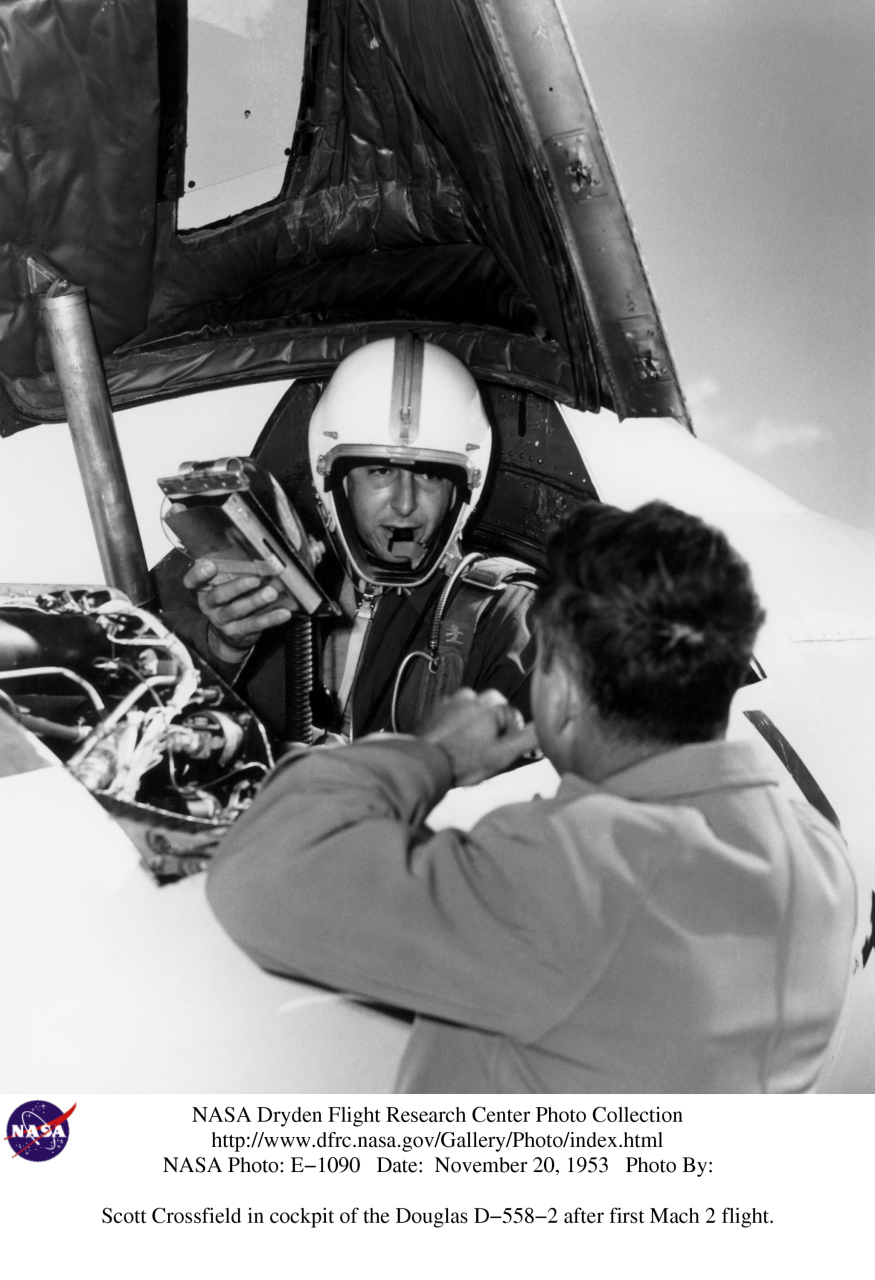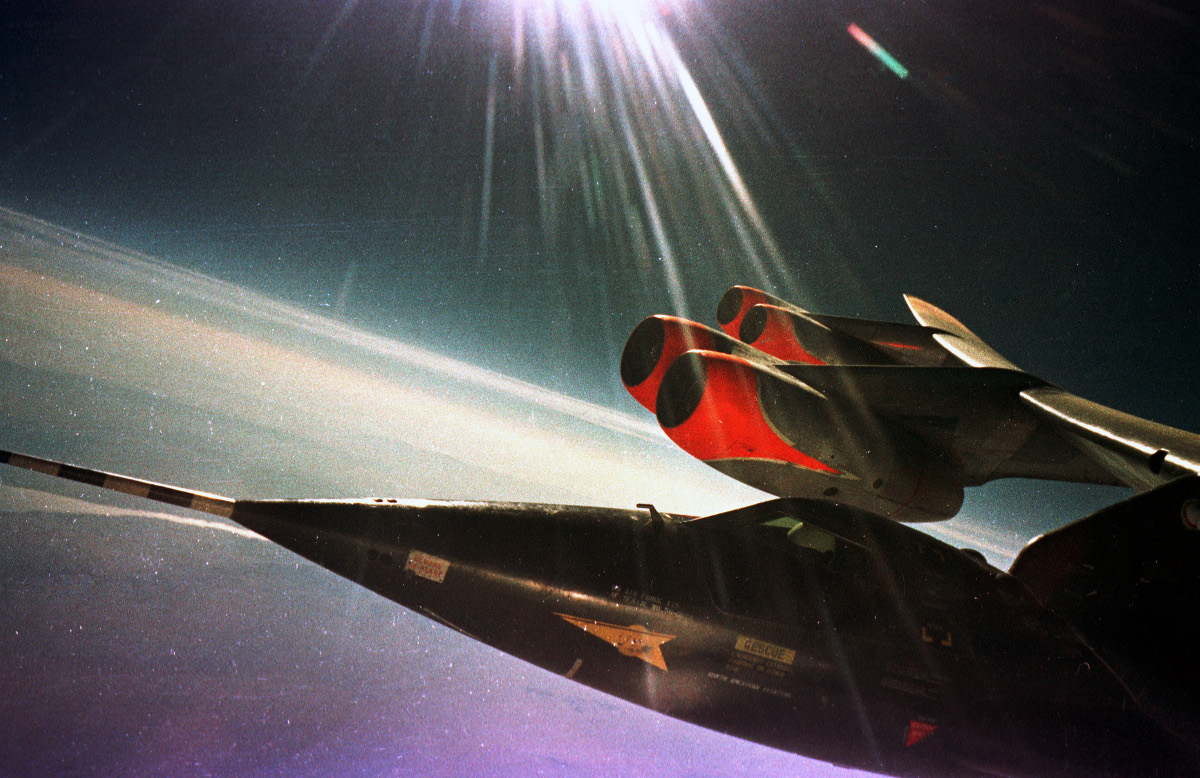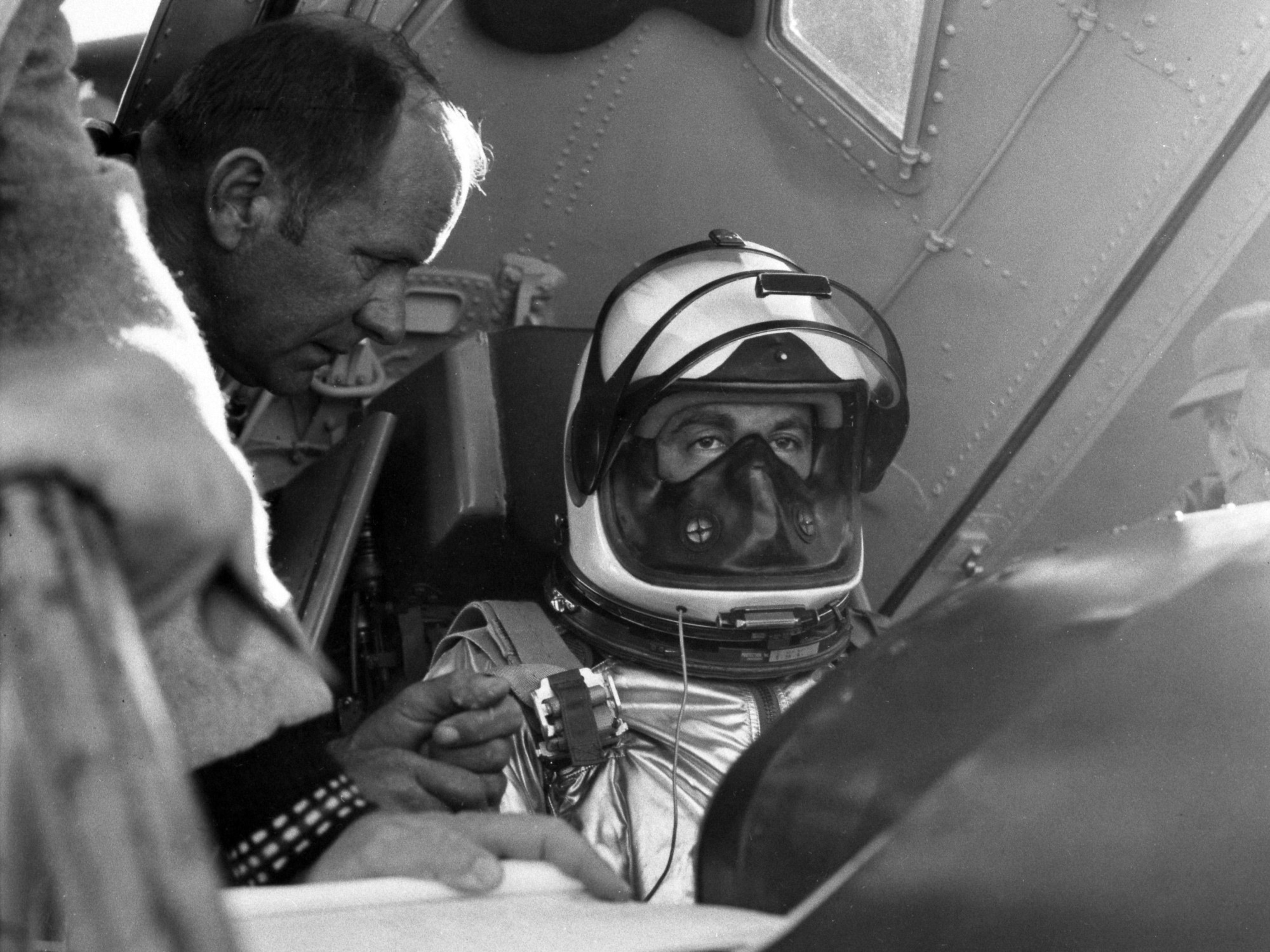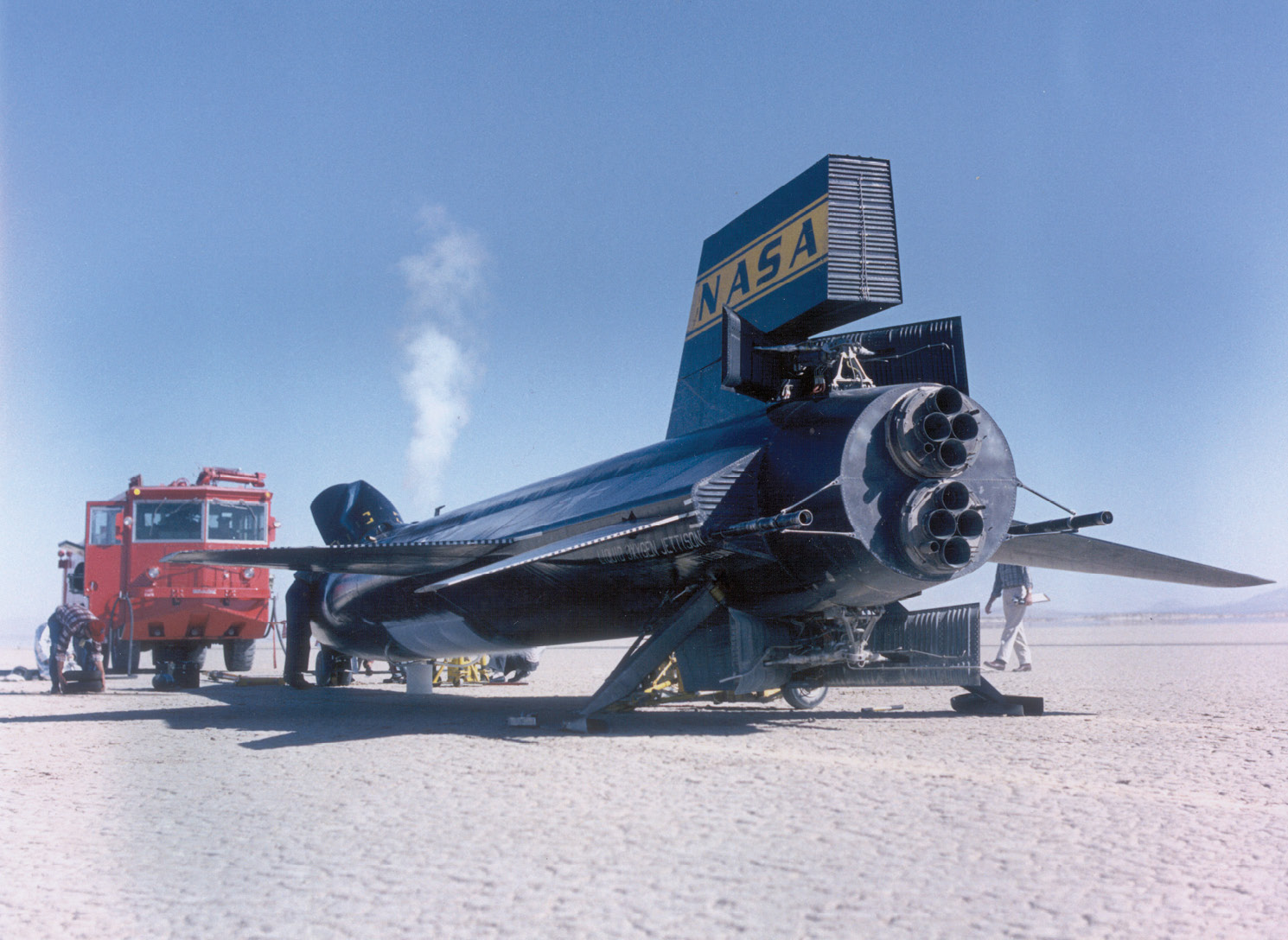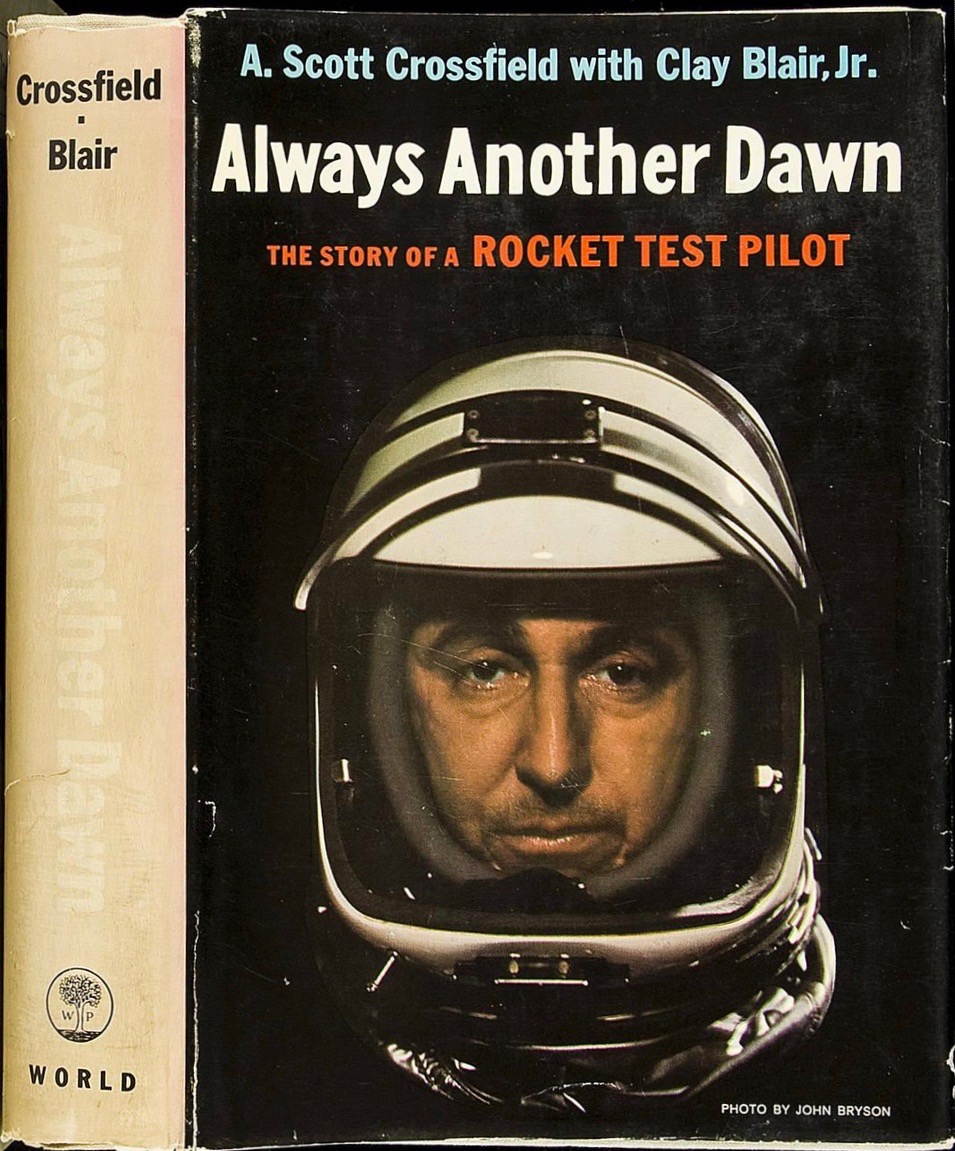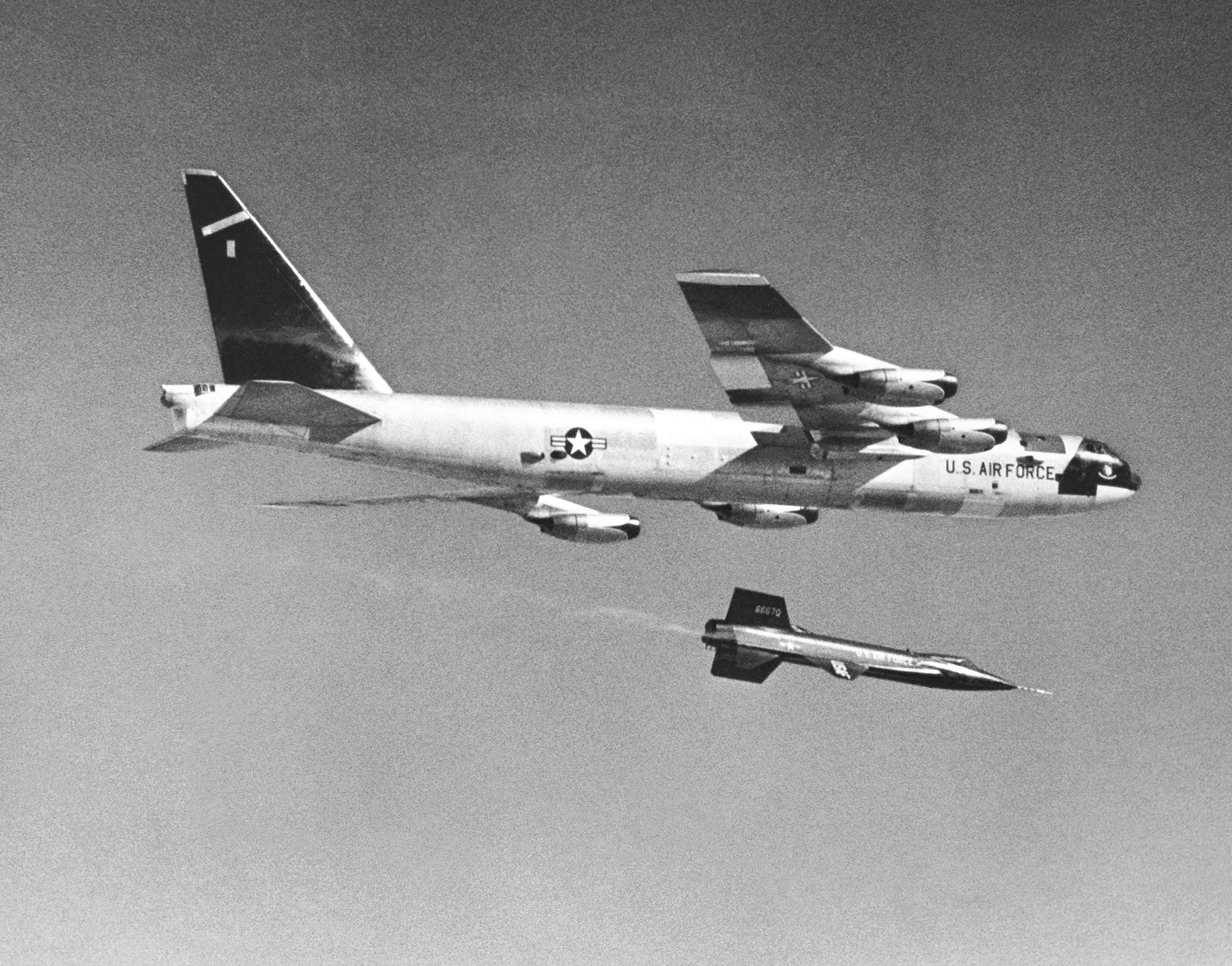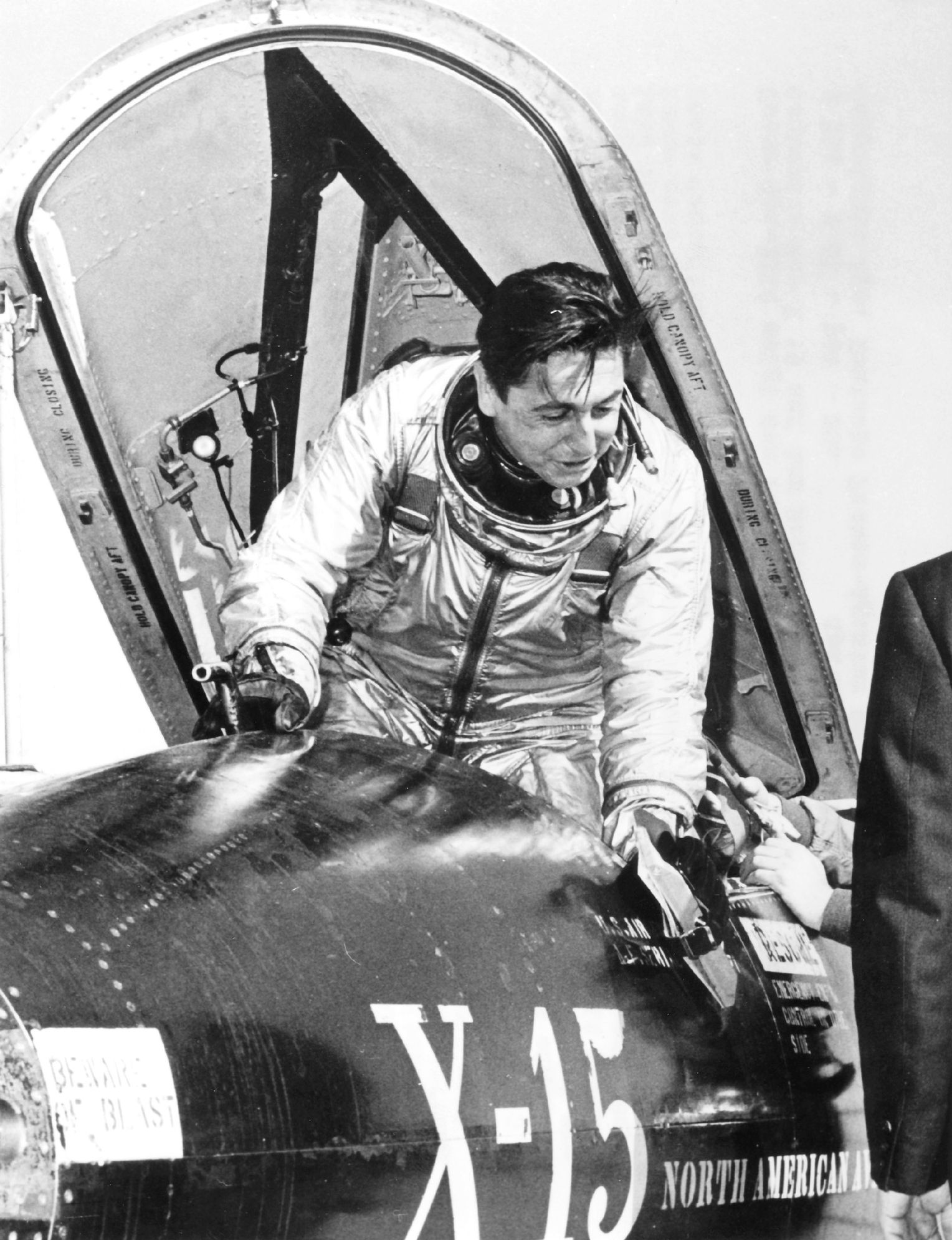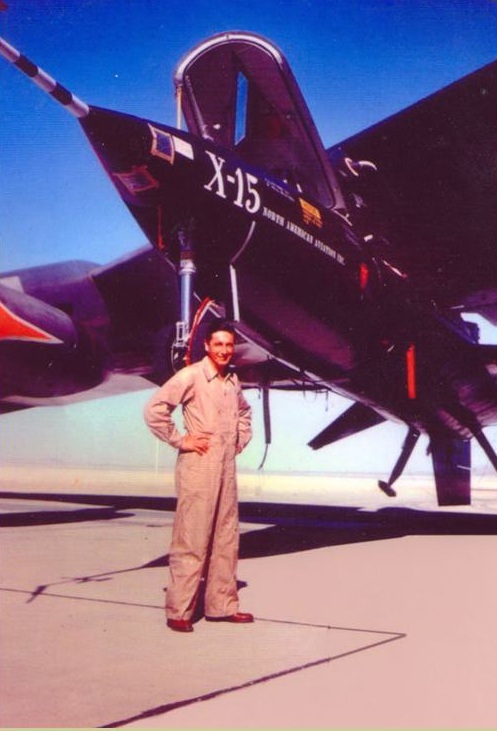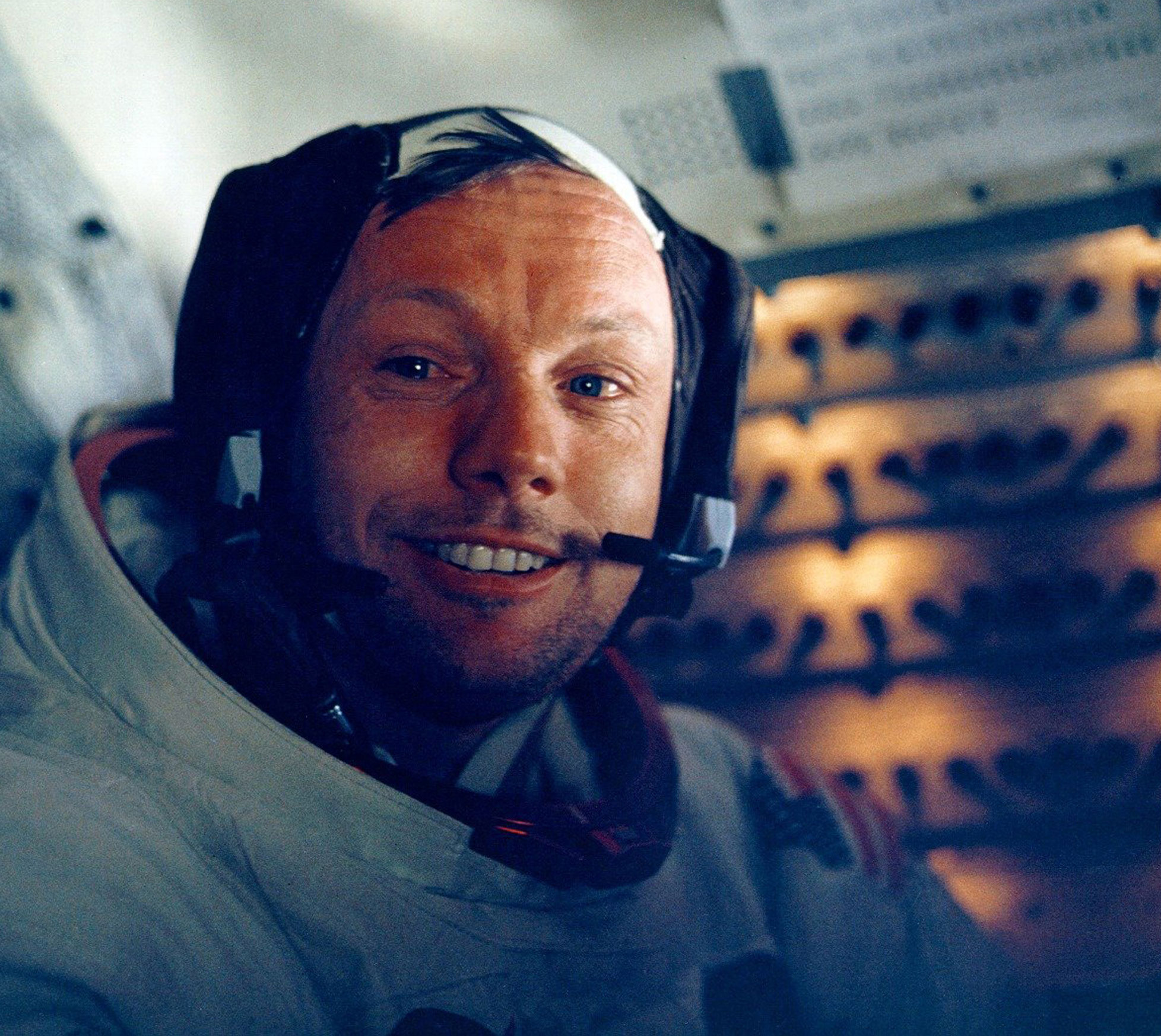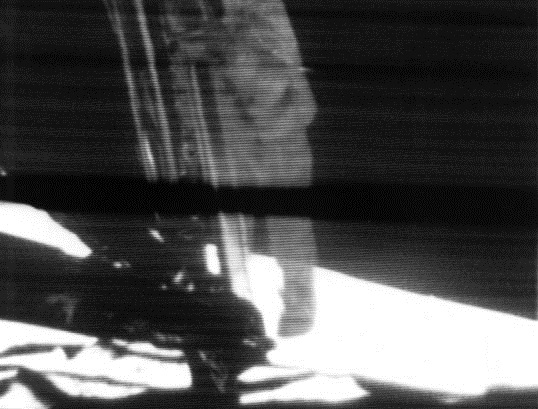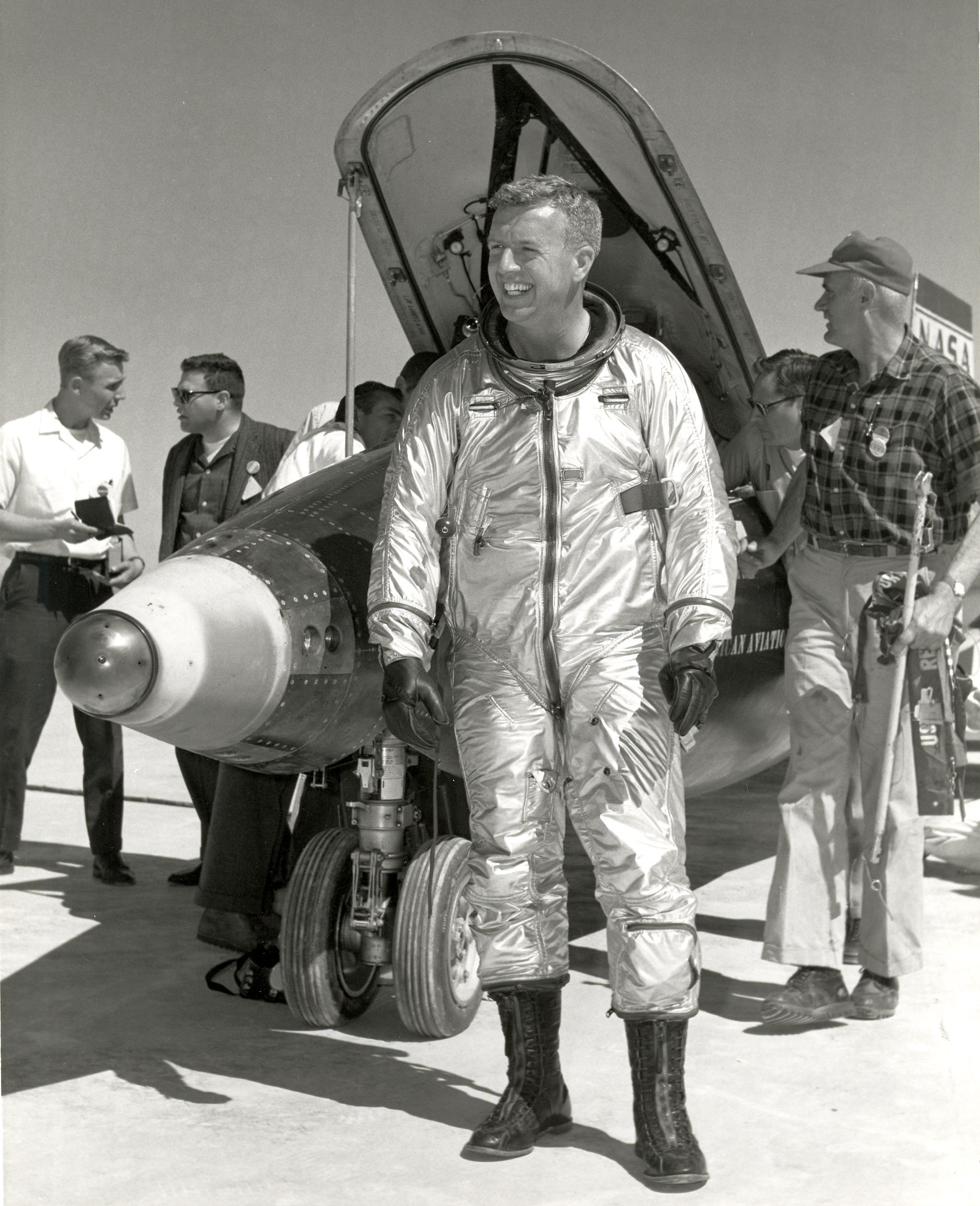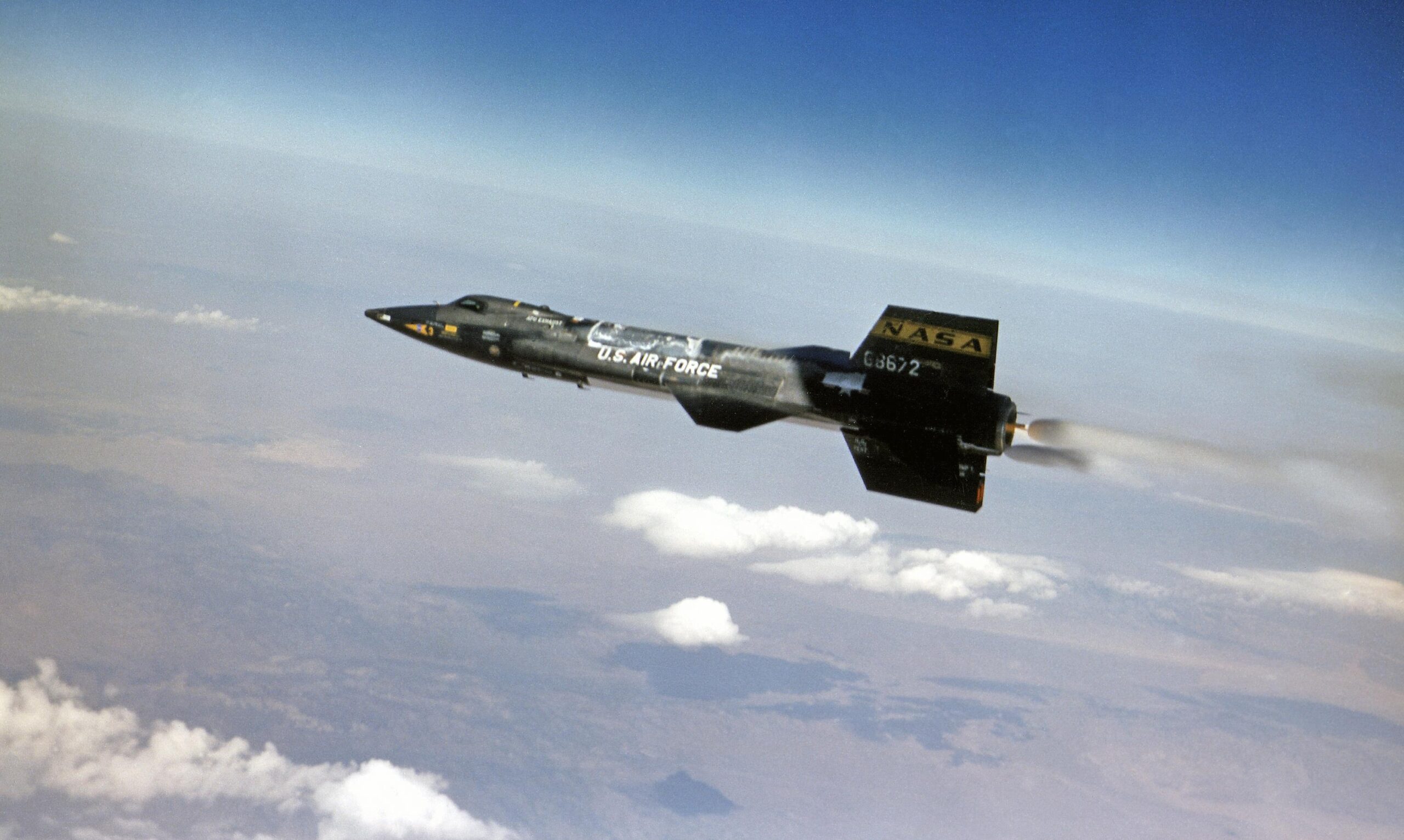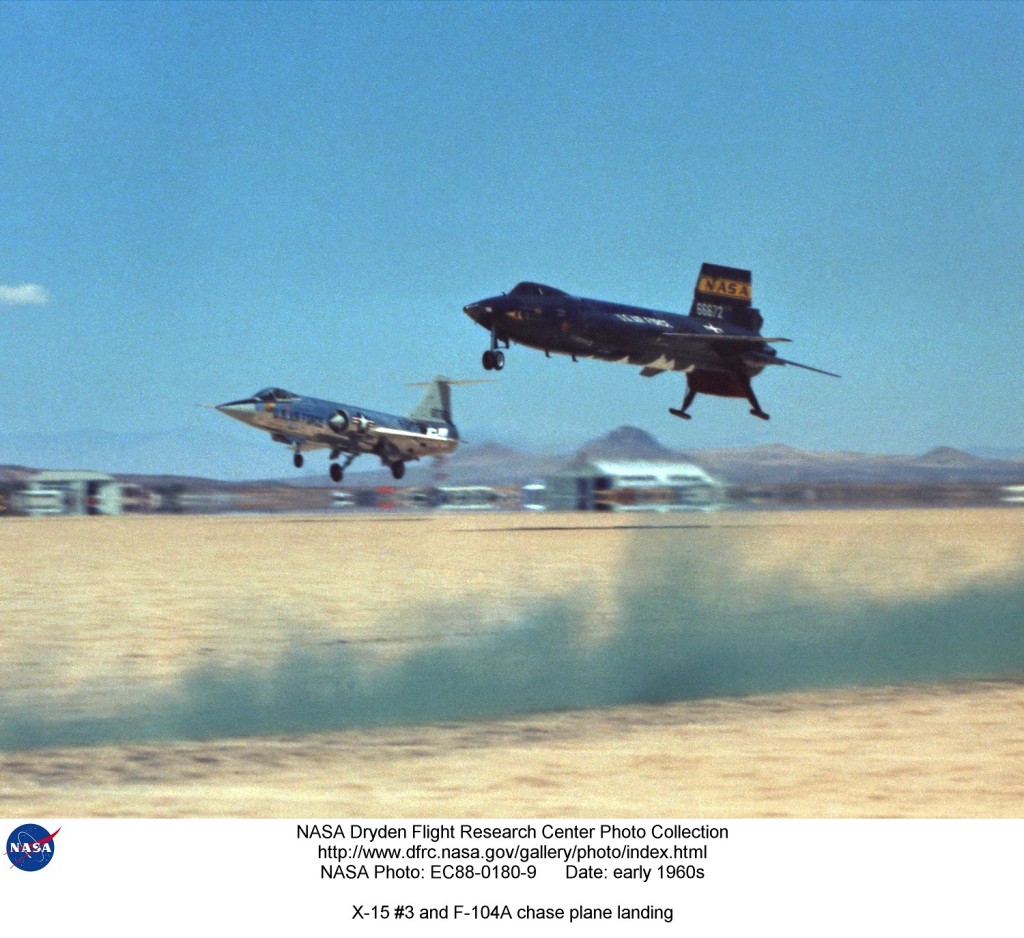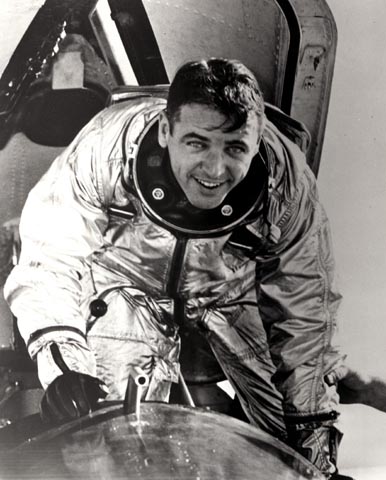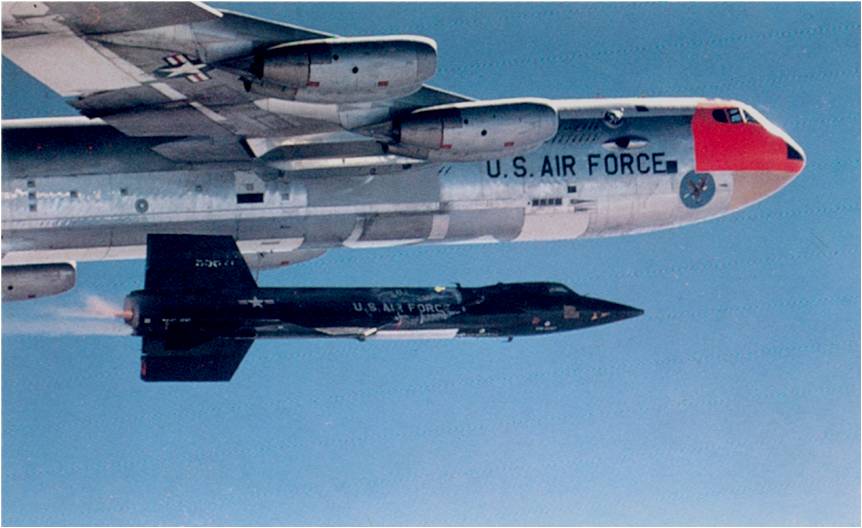
Albert Scott Crossfield, Jr., was born at Berkeley, California, 2 October 1921, the second of three children of Albert Scott Crossfield and Lucia Dwyer Scott Crossfield. (“Scott Crossfield” is the family name, going back for many generations.) His father was a chemist who was the superintendent of the Union Oil Refinery in Wilmington, California. At the age of 5 years, the younger Scott Crossfield contracted pneumonia. He was comatose for a time and not expected to survive. When he finally began to recover, he was confined to bed for many months. The effects of this illness lasted throughout his childhood.
It was during this time that he developed his interest in aviation. He learned to draw, studied airplanes, and built scale models. Charles F. (“Carl”) Lienesch, who was a pilot for the Union Oil Company, gave Scotty his first ride aboard an airplane at age 6. As a teenager, he took flight lessons in an Inland Sportster at the Wilmington Airport.
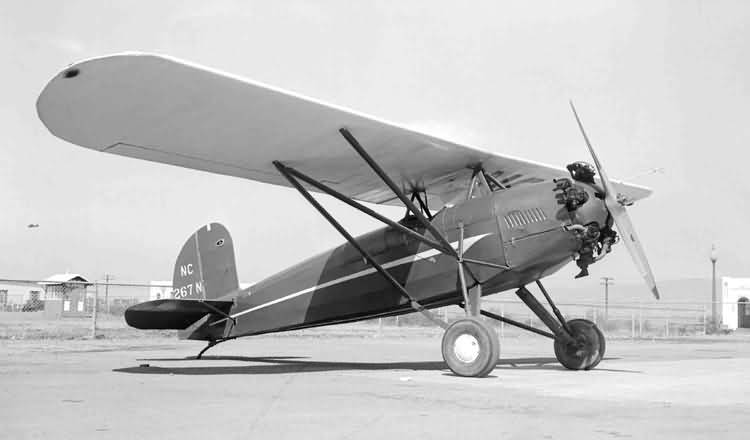
After his family bought a farm in Oregon, Scott Crossfield continued flight lessons and soloed a Curtis Robin at the age of 15. He earned his private pilot certificate at 18. After graduating from high school, “Scotty” helped his father with the family farm before attending the University of Washington as a student of aeronautical engineering. He took a job at Boeing to pay his tuition and support.
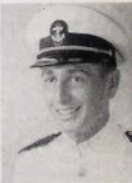
After America’s entry into World War II, Scott Crossfield enlisted in the U.S. Army Air Corps as an aviation cadet, but because of expected delays in training, quickly transferred to the U.S. Navy. He enlisted as a Seaman 2/c in the Navy’s V-5 Program at the Naval Reserve Aviation Base, Seattle, Washington, on 21 February 1942. He began Primary Flight Training there, 7 May 1942. Scotty completed military flight training and was commissioned an Ensign, United States Navy, in December 1942.
On 21 April 1943, Ensign Albert Scott Crossfield, U.S. Navy, married Miss Alice Virginia Knoph at Corpus Christi, Texas.
Promoted to lieutenant (junior grade) with date of precedence 21 March 1944.
During World War II, Scott Crossfield served as a fighter pilot, flight and gunnery instructor, flying the Chance Vought F4U Corsair and Grumman F6F Hellcat. Though he was assigned to Fighting Squadron FIFTY-ONE (VF-51) aboard the Independence-class light aircraft carrier USS Langley (CVL-27), he did not serve in combat. He was promoted to the rank of lieutenant 1 August 1945. Scotty was released from active duty 31 December 1945. After the war he joined a Naval Reserve squadron and flew the Goodyear Aircraft Co. FG-1D Corsair at NAS Sand Point, Washington.
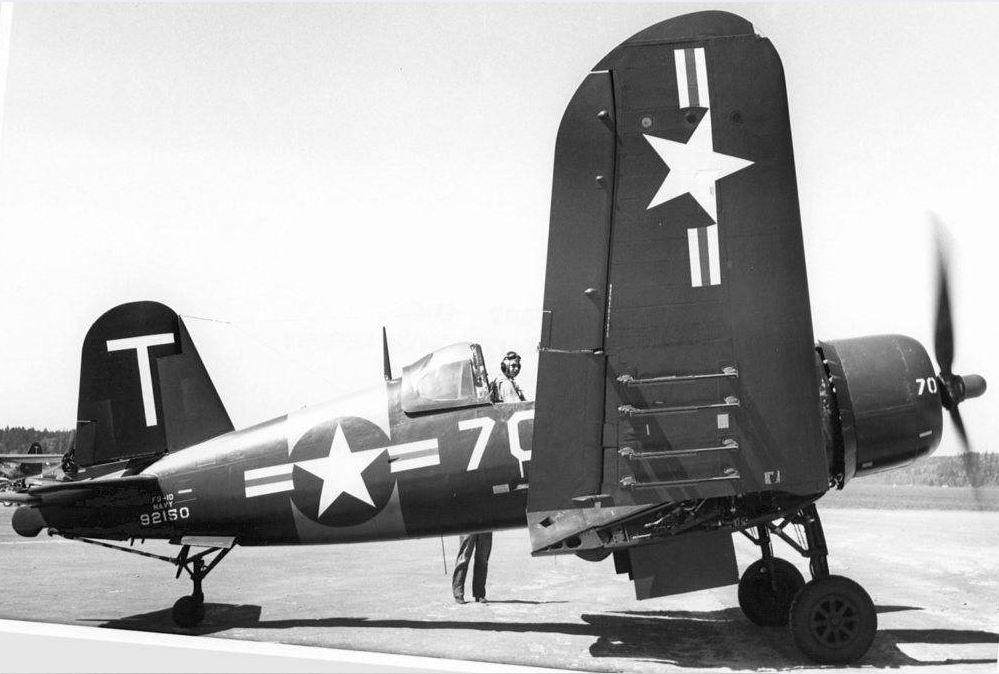
During this time he resumed his education at the University of Washington and graduated with a bachelor’s degree in aeronautical engineering in 1949, and a master’s degree in 1950. As a graduate student he was the operator of the university’s Kirsten Aeronautical Laboratory wind tunnel.
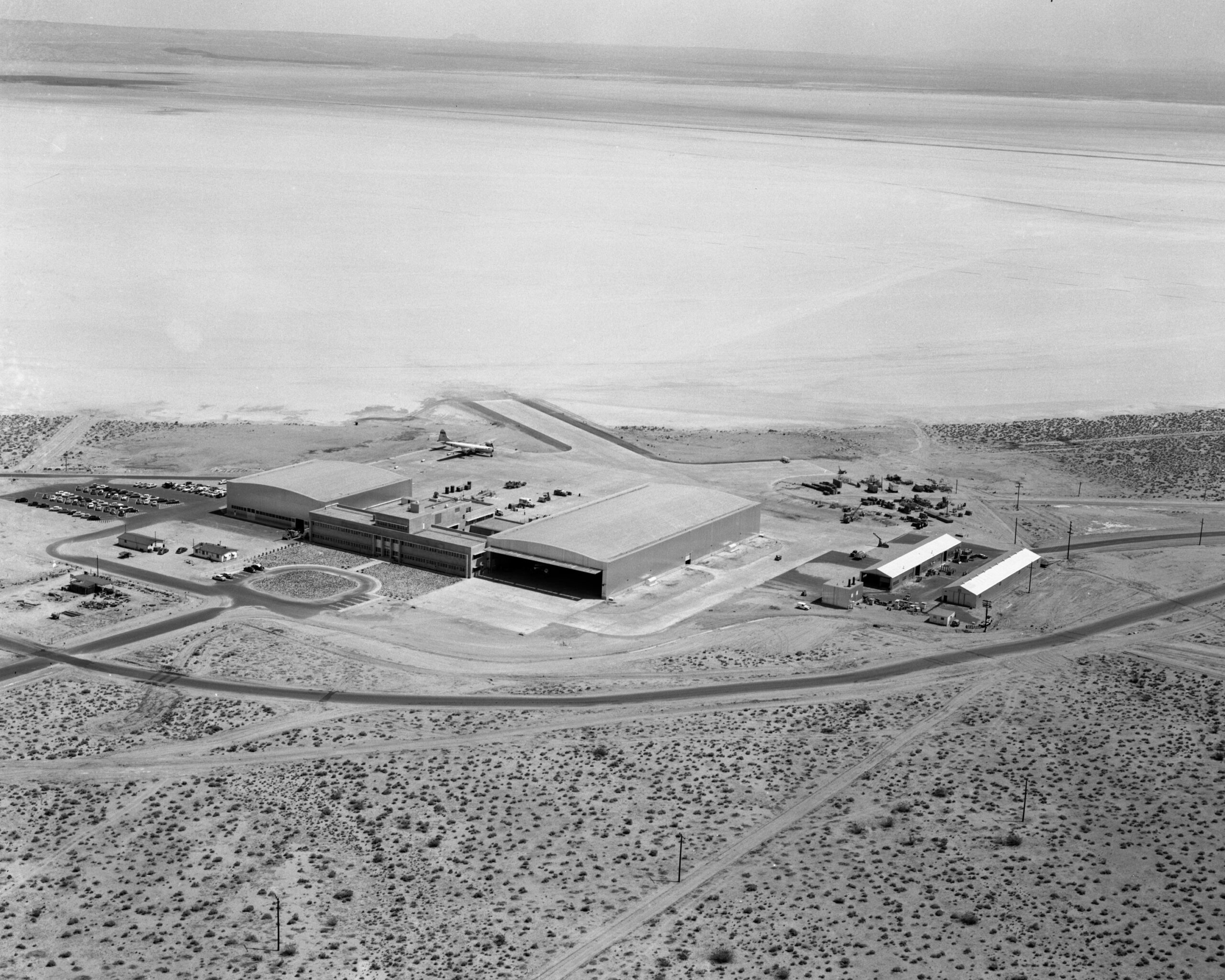
In 1950 Scott Crossfield joined the National Advisory Committee for Aeronautics (NACA, the predecessor of NASA) as an Aeronautical Research Pilot at the NACA High Speed Flight Station, Edwards Air Force Base, California. He flew many high-performance jet aircraft like the North American Aviation F-100 Super Sabre, and experimental airplanes such as the Convair XF-92, Douglas X-3, Bell X-4 and X-5. He also flew the research rocket planes, making 10 rocket flights in the Bell X-1 and 77 in the Douglas D-558-II Skyrocket.
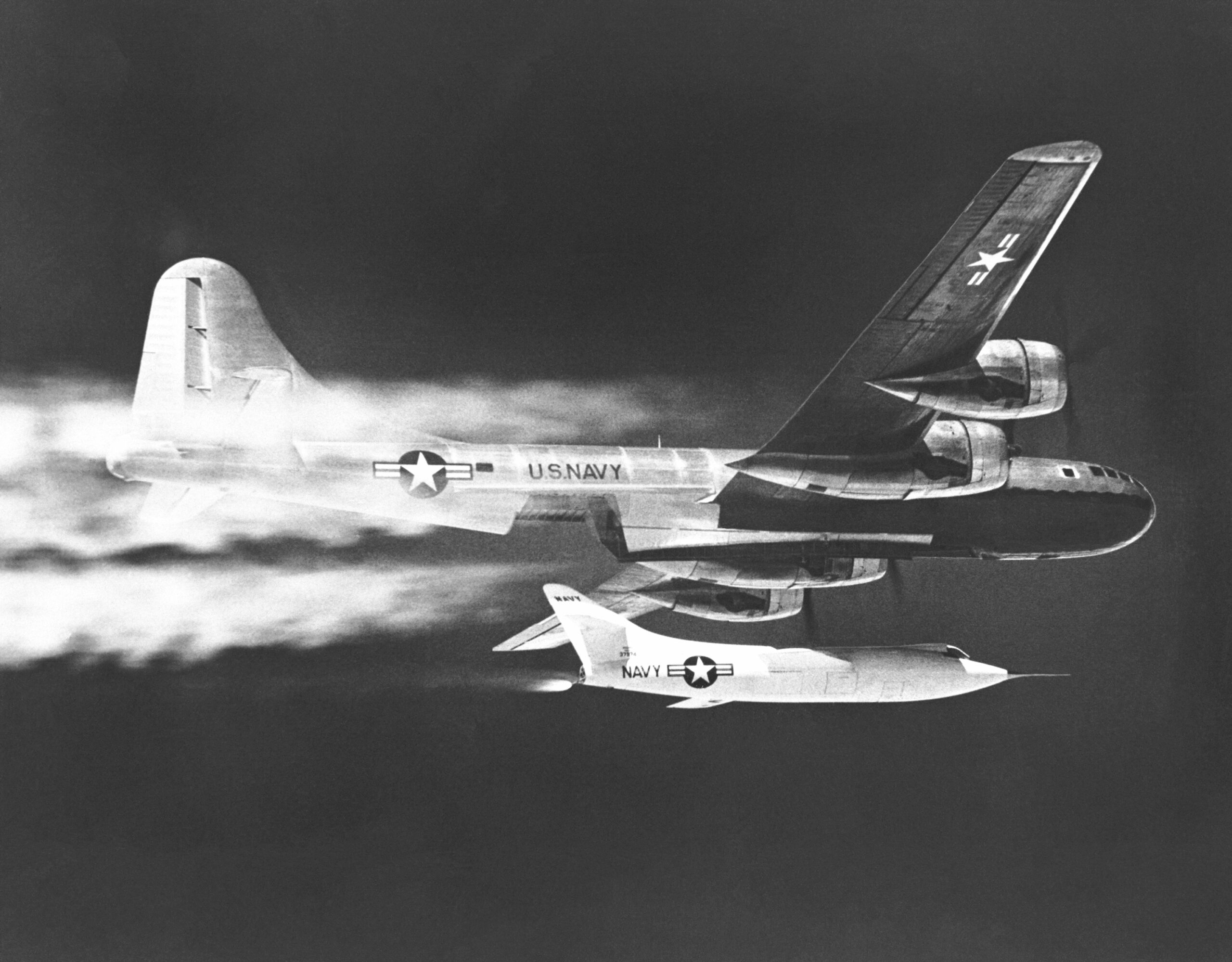
On 20 November 1953, Scott Crossfield became the first pilot to fly faster than twice the speed of sound (Mach 2). The D-558-II was carried aloft by a Boeing P2B-1S Superfortress drop ship (a four-engine B-29 long range heavy bomber which had been transferred from the U.S. Air Force to the Navy, then heavily modified by Douglas) to 32,000 feet (9,754 meters) and then released. Scotty fired the LR8 rocket engine and climbed to 72,000 feet (21,945 meters). He put the Skyrocket into a shallow dive and, still accelerating, passed Mach 2 at 62,000 feet (18,898 meters). After the rocket engine’s fuel was expended, he flew the rocketplane to a glide landing on Rogers Dry Lake.
In 1955 Crossfield left NACA and joined North American Aviation, Inc., as Chief Engineering Test Pilot. He planned and participated in the design and operation of the X-15 hypersonic research rocketplane for the Air Force and NASA. He also worked closely with the David Clark Co., in the development of the project’s full-pressure suits.
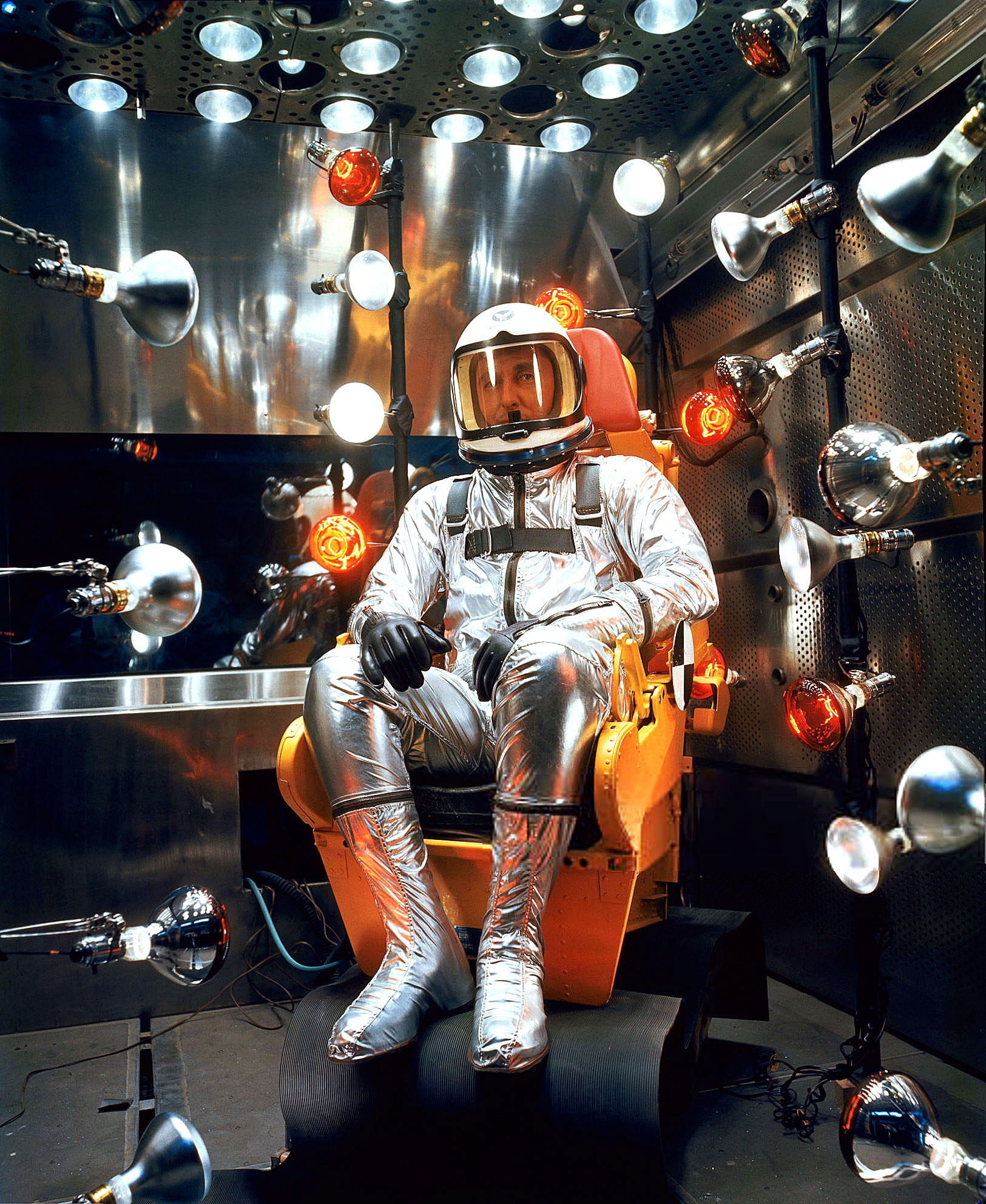
Milton O. Thompson, another X-15 test pilot, wrote in At the Edge of Space,
“. . . he was intimately involved in the design of the aircraft and contributed immensely to the success of the design, as a result of his extensive rocket airplane experience. . . Scott was responsible for a number of other excellent operational and safety features built into the aircraft. Thus, one might give Scott credit for much of the success of the flight program. . . .”
—At the Edge of Space, by Milton O. Thompson, Smithsonian Institution Press, Washington and New York, 1992, at Page 3
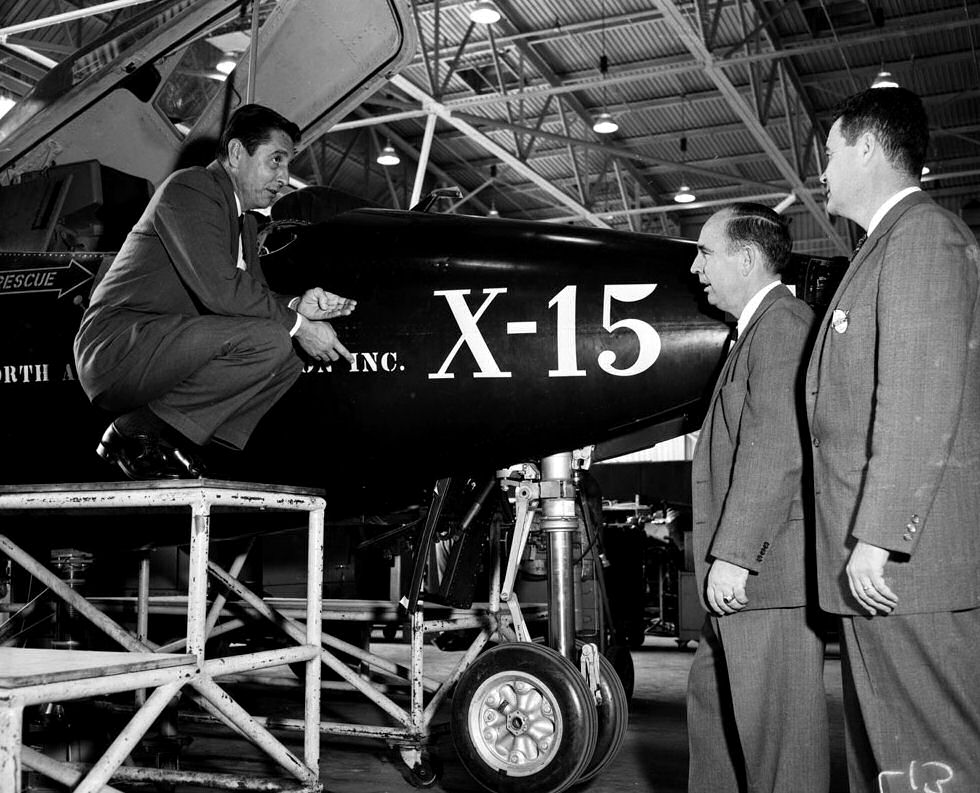
In 1959–1960, Scott Crossfield flew all of the contractor’s demonstration phase flights for the X-15, including 16 captive carry flights under the wing of the NB-52A Stratofortress while systems were tested and evaluated, one glide flight, and thirteen powered flights. He reached a a maximum altitude of 88,116 feet (26,858 meters) on Flight 6, and a maximum speed of Mach 2.97 (1,960 miles per hour/3,154 kilometers per hour) on Flight 26. The X-15 was then turned over to NASA and the Air Force. The X-15 Program involved a total of 199 flights from 1959 until 1968.
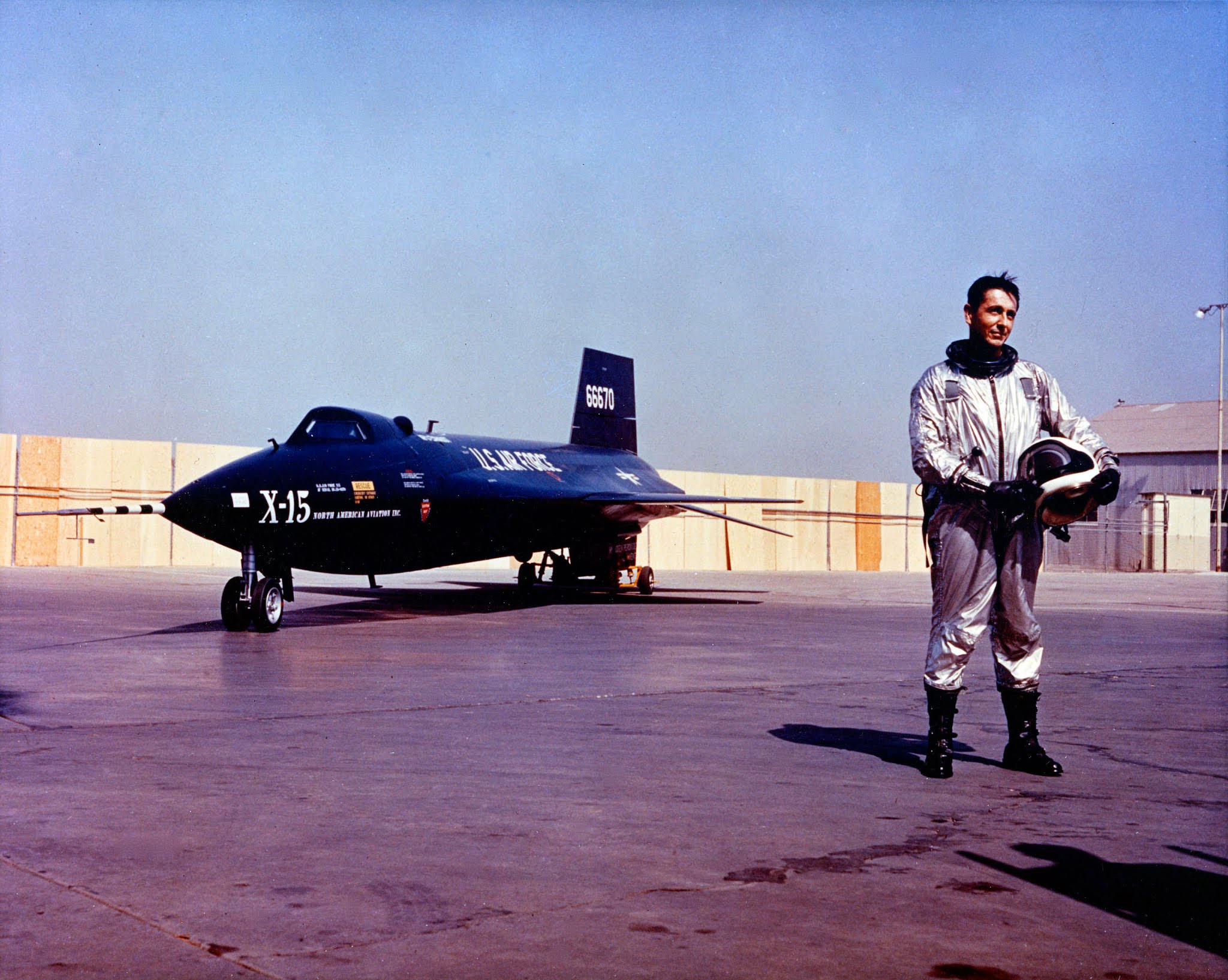
After leaving the X-15 Program, Scott Crossfield continued as a Systems Director with North American Aviation, Inc., working on the Apollo Command and Service Module and the S-IVB second stage of the Saturn V rocket. He left North American in the late ’60s and served as an executive with Eastern Air Lines and Hawker Siddeley. He also continued as a aeronautical engineering consultant to private industry and government.
Among many other awards, Scott Crossfield was received the Harmon Trophy, the Collier Trophy, and the Iven C. Kincheloe Award of the Society of Experimental Test Pilots..
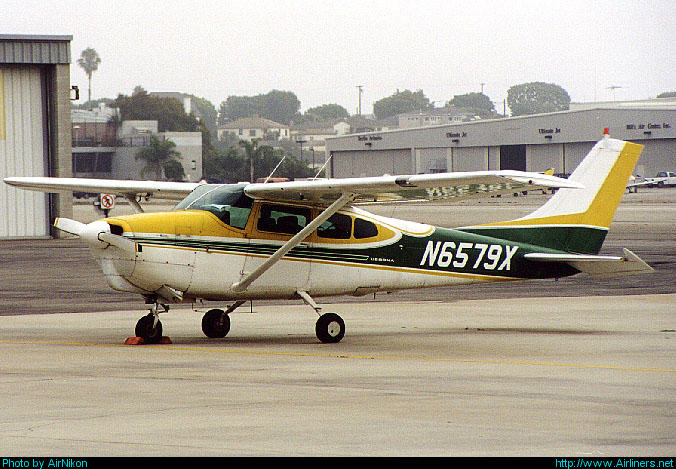
In 1980 Crossfield resumed flying when he purchased a 1960 Cessna 210A Centurion, N6579X, serial number 21057579. This was a single-engine, four-place light airplane, powered by an air-cooled Continental six-cylinder engine. He had flown more than 2,000 hours in this airplane when it crashed during a severe thunderstorm, 19 April 2006, while on a flight from Prattville, Alabama, to Manassas, Virginia.
Albert Scott Crossfield, Jr., was killed. His remains are interred at the Arlington National Cemetery, Arlington, Virginia.
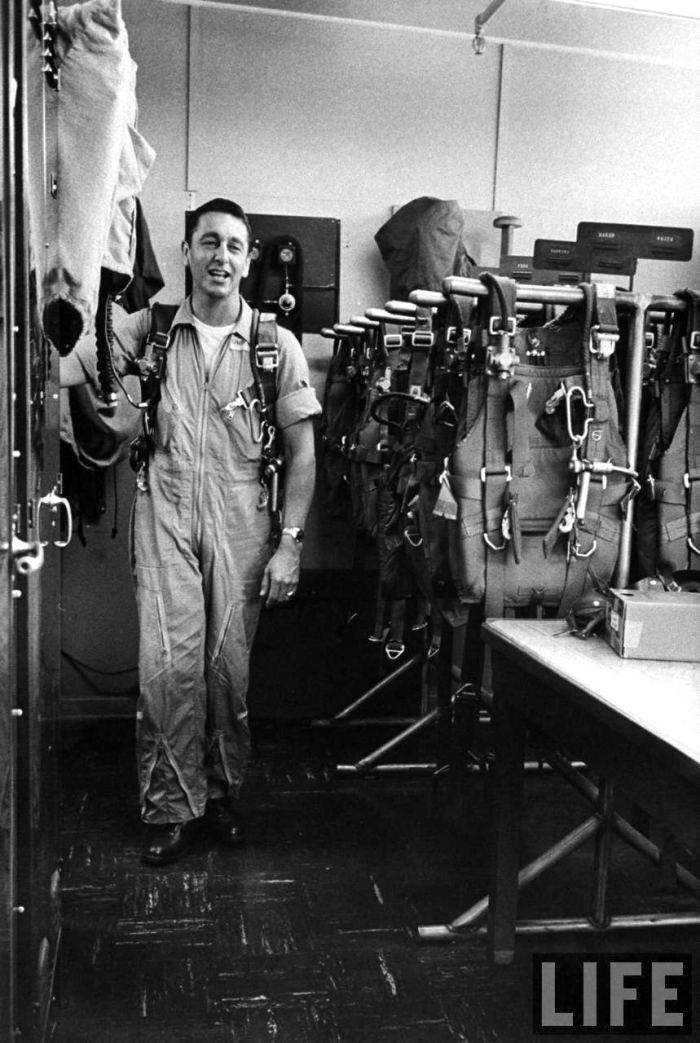
Highly recommended: Always Another Dawn: The Story Of A Rocket Test Pilot, by Albert Scott Crossfield and Clay Blair, Jr., The World Publishing Company, Cleveland and New York, 1960.
© 2018, Bryan R. Swopes
